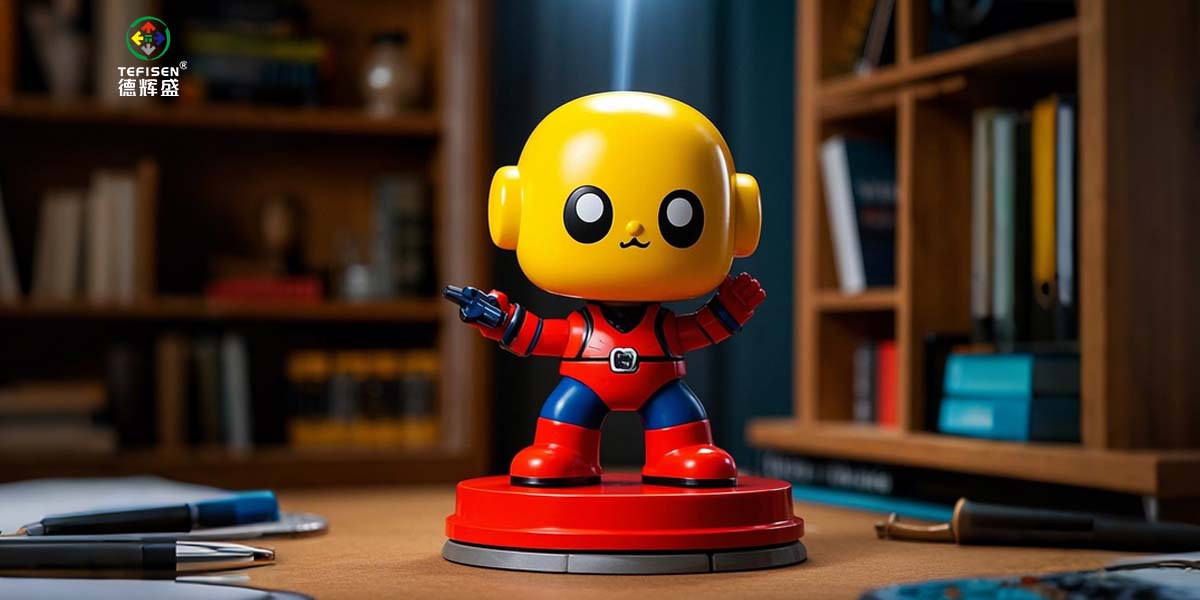Toy Pad Printing Technology: The Key to Unlocking New Market Doors!
【Abstract】Pad printing technology plays a crucial role in toy manufacturing, enabling efficient printing of both simple logos and complex patterns. As demand for aesthetic appeal increases, it has become key in the industry. TEFISEN's single-color, two-color, and four-color machines meet diverse market needs, enhancing production efficiency. With increasing environmental standards, pad printing technology is poised for significant growth, offering a promising future for the toy industry. Let's take a closer look below!
Toy pad printing technology is an indispensable core technology in toy manufacturing. Its main function is to provide high-quality surface printing for various toy products, from simple logos to complex patterns, all of which can be efficiently printed through pad printing technology. With the increasing market demand for toy aesthetics, pad printing technology has gradually become one of the key technologies in toy manufacturing. This article will provide a detailed analysis from six key aspects, including the development history, characteristics of toy pad printing technology, performance comparison of TEFISEN equipment, application markets, toy market potential, and environmental requirements, and will explore each of these aspects in-depth with specific data.

I. History of Toy Pad Printing Technology
The history of toy pad printing technology dates back to the mid-20th century, when the accelerating industrialization process led to rapid development in this technology:
1. Pad printing technology was first applied in toy manufacturing in the 1950s. The first generation of pad printers was mainly used for printing simple text and patterns. The early equipment was mostly mechanically driven, with relatively low printing accuracy and efficiency.
2. In the 1980s, with the introduction of automation technology, pad printing gradually transitioned from single-color to multi-color printing, improving production efficiency by over 200%.
3. In the early 21st century, smart and environmentally friendly technologies became the development trends for pad printing, and the introduction of servo-driven pad printing technology made toy surface printing more precise and flexible.
4. With the global expansion of toy production demand, after 2020, pad printing technology specifically developed for the toy industry gradually became the mainstream in the market. According to industry reports, the global pad printing technology market reached USD 800 million in 2023, and is expected to exceed USD 1.2 billion by 2030, with an annual growth rate of approximately 5.6%.
II. Characteristics of Toy Pad Printing Technology
Toy pad printing technology has characteristics such as high precision, flexibility, and multi-functionality, making it widely used in toy manufacturing. Key features include:
1. High Precision Printing: Pad printing technology can accurately print fine patterns on various toy surfaces, with an error margin of ±0.02mm, ensuring clear presentation of every detail.
2. Prints on Various Materials and Shapes: This technology can handle a wide range of plastic materials, including ABS, PVC, PP, LDPE, etc., and is capable of printing on flat, curved, and irregular surfaces.
3. High Efficiency and Automation: The latest models of toy pad printing equipment can print 2000-5000 pieces per hour, greatly improving production efficiency, especially for large-scale production demands.
III. TEFISEN Toy Pad Printing Equipment Performance Comparison
As a leading manufacturer of printing equipment, TEFISEN offers a variety of toy pad printing technology equipment to meet the different needs of customers. Below is a performance comparison of three TEFISEN toy pad printers:
| Model | TFS-P1-160 (Single Color) | TFS-P2-200S (Two-Color) | TFS-P4-200C (Four-Color) |
| Number of Colors | 1 | 2 | 4 |
| Max. Printing Area | 100mm × 100mm | 150mm × 200mm | 100mm × 150mm |
| Printing Speed | 1600 pcs/hour | 1500 pcs/hour | 1200 pcs/hour |
| Operation Method | Pneumatic | Pneumatic + Servo | Full Servo |
| Suitable Materials | Plastic, Metal, Wood, Glass | Plastic, Metal, Wood, Glass | Plastic, Metal, Wood, Glass |
| Automation Level | Semi-Automatic | Semi-Automatic, Fully Automatic | Fully Automatic |
• Single-Color Printer (TFS-P1-160): Suitable for simple logos and text printing.
• Two-Color Printer (TFS-P2-200S): Supports two-color printing and can handle more complex prints, such as gradient colors.
• Four-Color Printer (TFS-P4-200C): Suitable for high-precision, complex pattern printing, especially for toys requiring high-quality image representation.
Additionally, the TFS-P4-200C full servo drive technology provides higher precision and faster production efficiency.
IV. Application Markets for Toy Pad Printing Technology
Toy pad printing technology is widely applied in several sectors, including:
1. Building Blocks & Puzzles Market:
• The demand for printing numbers, letters, and patterns on small building blocks exceeds 1 billion pieces annually.
• The TFS-P1-160 printer can achieve 1200 pieces per hour of printed blocks, improving production efficiency by 30%.
2. Toy Models Market:
• Many toy models (such as cars, airplanes, etc.) require precise branding and pattern printing to enhance attractiveness and recognition. According to statistics, the global toy model market reached USD 15 billion in 2023, with pad printing contributing about 20% of the market share.
3. Electronic Toys Market:
• As the demand for printed buttons, patterns, and brand logos on electronic toys grows, manufacturers using the TFS-P2-200S printer can improve production efficiency by 25%.
4. Customized Toys Market:
• The demand for customized toys continues to grow, with the market expected to reach USD 5 billion by 2030.
V. Toy Market Potential Analysis
The global toy market continues to expand, providing a vast space for the demand for toy pad printing technology. A detailed analysis is as follows:
1. Global Toy Market Overview: According to Statista, the global toy market size reached USD 105 billion in 2023 and is expected to grow to USD 150 billion by 2030, with an annual growth rate of 5.2%.
• The Asia-Pacific region is the fastest-growing market, accounting for about 35% of the market share in 2023, and is expected to increase to over 40% by 2030.
• North America and Europe remain major mature markets, together accounting for 45% of the global market.
2. Toy Market Segmentation:
• Building Blocks Toys: Account for approximately 15% of the global toy market, and are expected to reach USD 22.5 billion by 2030, with a compound annual growth rate of 4.8%.
• Toy Models (e.g., Cars and Airplanes): The global market for toy models was valued at USD 15 billion in 2023, with pad printing technology contributing about 20% of the market share.
• Electronic Toys: The market size in 2023 was USD 18 billion, and it is expected to grow to USD 30 billion by 2030, with a compound annual growth rate of 7.3%.
3. Factors Driving Toy Consumption:
• Global Child Population: The number of children aged 0-14 reached approximately 1.8 billion in 2023, with India and China being two of the largest markets.
• Per Capita Toy Expenditure: In 2023, the per capita toy expenditure in the United States was USD 375, in Europe it was USD 250, and in the Asia-Pacific region it was around USD 50, indicating enormous growth potential.
4. Demand for Printed Toys:
• The demand for precision printing in high-end toys (such as collectible models) is expected to grow from USD 2 billion in 2023 to USD 3.5 billion by 2030.
• The customized toy market, especially for gifts and educational toys, is projected to grow from USD 1.5 billion in 2023 to USD 2.8 billion by 2030.
VI. Environmental Requirements for Toy Inks
Environmental-friendly inks have become the standard for toy printing, with the following key requirements:
1. Toy Ink Safety Standards: Toy printing inks must comply with safety standards such as EN 71-3, ASTM F963, ensuring they are non-toxic. According to market analysis, the global eco-friendly ink market size reached USD 2 billion in 2023, with toy printing demands accounting for about 15%.
2. Ink Performance Improvement: The application of water-based and UV inks in toy printing has increased by 12% and 8%, respectively, improving adhesion and wear resistance to meet the demands of various toy surfaces.
3. Future Trends in Toy Inks:
• The market for biodegradable inks is expected to account for 10% of the toy industry by 2030, offering sustainable solutions for the toy industry. Additionally, inks with temperature-sensitive and glow-in-the-dark properties are expected to develop further.
Toy pad printing technology, as an indispensable core technology in toy production, offers high efficiency, environmental friendliness, and multi-functionality, meeting the modern toy industry's demand for precision and production efficiency. TEFISEN's models such as the TFS-P1-160, TFS-P2-200S, and TFS-P4-200C meet the diverse demands for high-quality printing. With the continuous growth of the global toy market and increasing environmental requirements, toy pad printing technology will have even broader development prospects in the future. TEFISEN will continue to drive technological progress in the industry and provide excellent printing solutions to its customers.

